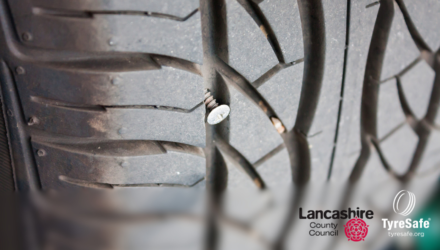
BOOM: In-cab cameras are a growing market
Adopting failing forward-facing camera solutions incapable of correctly capturing data or an accident could cost fleets millions in insurance losses, an industry expert has warned.
Nick Plowman, Chief Technical Officer of Intelligent Telematics, claims victims of poor systems could lose big sums due to not possessing accurate and admissible evidence to defend or mitigate insurance claims.
Many cameras currently only capture data at one-second intervals, meaning they are often only able to provide impact speeds before or after an accident.
Mr Plowman claims companies must insist on using cameras that capture data at ten times per second, to ensure impact speeds are identified at the exact point when an accident occurs.
“There is massive interest in forward facing camera technology because businesses are recognising the benefits it can deliver in terms of proving what really happened and protecting against avoidable insurance costs,” he said.
“Any camera will help to mitigate claims, but as the insurance sector becomes more technically aware it will become critical to ensure that GPS accuracy and G-force measurement provides highly reliable impact speeds and force to prevent any challenges to the validity of data.”
“Not all camera solutions are fit for purpose…poor quality data faces the risk of being dismissed.”
Nick Plowman, Intelligent Telematics
According to Mr Plowman, it is also essential that a camera is mounted perfectly square on both horizontal and vertical planes to have a zero G-force reading when stationary.
Fleet operators are often advised to mount cameras angled forward to pick up more of any blind spots, so a vehicle will automatically be registering up to 0.45g at standstill.
Auto calibration is a necessary requirement of any camera solution that will ensure correct measurement and protect the legitimacy of any data capture, Mr Plowman added.
“Not all camera solutions are fit for purpose and as levels of adoption increases and the technology becomes embedded in the road transport and fleet sectors, poor quality data faces the risk of being dismissed with operators ultimately having to absorb the added costs,” he said.
“Therefore, it is important that companies carefully consider any camera investment to avoid potentially spiralling insurance.”


















Adam
( Monday, March 10, 2014 - 22:47 )
I am surprised that a reputable website has published such unsubstantiated claims by Nick Plowman.
Firstly, GPS is not approved by the home office for speed detection, so whether it’s 1 or 10 times per second. In a court of law it’s irrelevant.
Secondly, a forward facing camera will give an indication of the G force involved in an incident in the vehicle it’s in, also its fixed to a windscreen. Insurers biggest costs/concerns are third party bodily injuries. How does your devices prove what G force happened to the third party? Remember humans are not attached to windscreens!
Nick, if you could please post any links on here to prove your claims and show it’s not just sales propaganda. If not the fleet industry should take your claims with a pinch of salt.